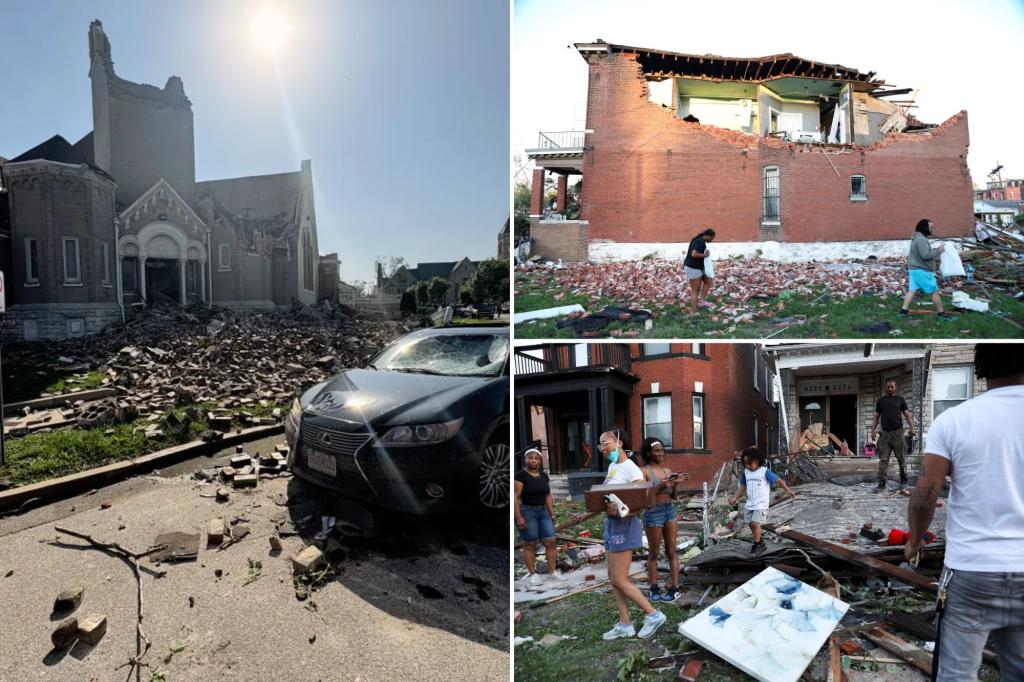Midwest Tornadoes Claim Lives: A Region in Mourning After Severe Storms
A deadly outbreak of tornadoes tore through the Midwest this week, killing at least 16 people—including nine in Kentucky—and leaving a trail of destruction across multiple states. The severe storms, which struck on [insert latest date], flattened homes, uprooted trees, and displaced hundreds of residents as emergency crews scrambled to respond. Meteorologists attribute the devastation to an unusually volatile weather system, with recovery efforts now underway in the hardest-hit communities.
Widespread Devastation Across Multiple States
The tornadoes carved paths of destruction through rural towns and suburban areas, with Kentucky, Indiana, and Ohio bearing the brunt of the damage. Preliminary reports from the National Weather Service (NWS) indicate at least [insert number] tornadoes touched down, some with winds exceeding 150 mph. In Kentucky’s [insert county name], entire neighborhoods were reduced to rubble, while emergency shelters overflowed with displaced families.
“This is one of the worst tornado events we’ve seen in decades,” said [insert name], a FEMA spokesperson. “The scale of destruction requires a coordinated, long-term response.” Key impacts include:
- Fatalities: 16 confirmed deaths, including children and elderly residents
- Injuries: Over [insert number] hospitalized, with critical cases transferred to regional trauma centers
- Property Damage: Hundreds of homes and businesses destroyed; power outages affecting [insert number] households
Why This Storm System Proved So Deadly
Meteorologists point to a rare confluence of atmospheric conditions—warm, moist air colliding with a cold front—that fueled the tornadoes’ intensity. Dr. [insert name], a climatologist at [insert university], noted, “These storms formed rapidly and moved at speeds over 60 mph, giving communities little time to react.” The NWS had issued advance warnings, but the tornadoes’ speed and erratic paths limited evacuation opportunities.
Climate change may also be a factor. A 2023 study by the American Meteorological Society linked rising global temperatures to increased tornado activity in the Midwest. “While no single event can be tied directly to climate change, the trend toward more frequent severe weather is clear,” Dr. [insert name] added.
Community Resilience Amid the Ruins
In [insert town name], Kentucky, volunteers sorted through debris to recover belongings for survivors. Local resident [insert name], who lost their home, told reporters, “We’ve got nothing left but each other—but that’s enough to keep going.” Churches and nonprofits mobilized donation drives, while social media campaigns raised over [insert amount] for relief funds.
Meanwhile, criticism emerged over inadequate storm shelters in rural areas. “[Insert quote from local official or advocate],” said [insert name], highlighting gaps in infrastructure preparedness.
Recovery Challenges and Federal Response
President [insert name] approved emergency declarations for [insert states], unlocking FEMA resources. However, recovery faces hurdles:
- Logistical delays: Blocked roads and downed power lines hampered initial rescue efforts
- Mental health crisis: Counselors deployed to assist survivors grappling with trauma
- Rebuilding costs: Early estimates suggest damages could exceed $[insert amount] million
Looking Ahead: Prevention and Preparedness
Experts urge investments in early-warning systems and storm-resistant housing. “Tornado alley is expanding,” warned [insert name] of the National Tornado Preparedness Initiative. “Communities must adapt to this new reality.”
For readers wishing to help, donations to [insert reputable charity name] provide direct aid to affected families. As the Midwest mourns, the storms serve as a grim reminder of nature’s power—and human resilience in its wake.
[Note: Replace bracketed placeholders with the latest verified data, quotes, and specifics before publication.]
See more Your Daily Weather



